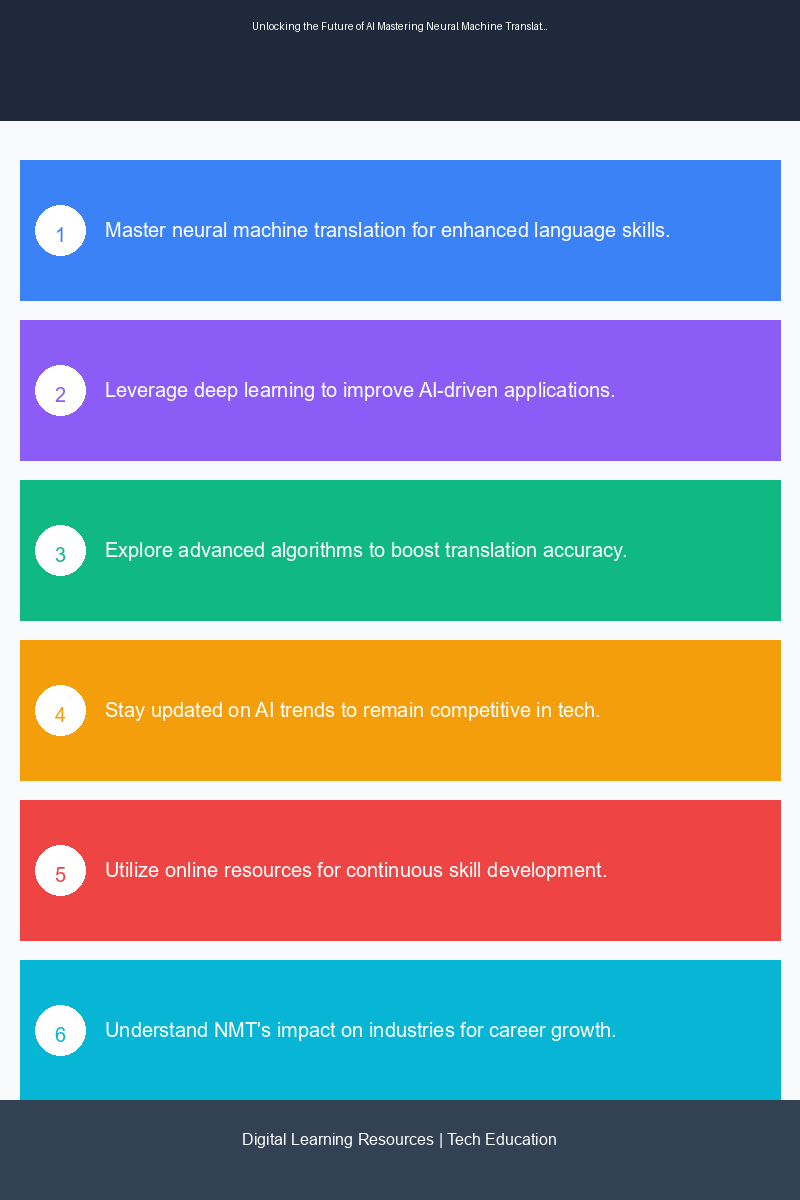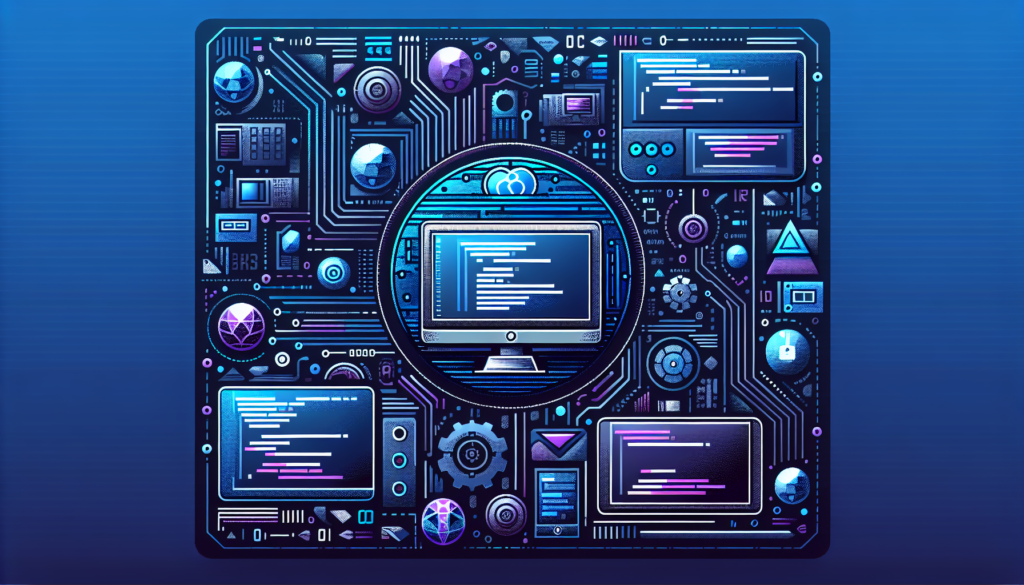Key Takeaways: This blog post explores neural machine translation, advanced algorithms, and deep learning techniques, while providing actionable learning paths and insights into industry trends. Equip yourself with practical skills that will enhance your career in the rapidly evolving AI landscape.
Introduction
The digital landscape is undergoing a seismic shift, driven by advancements in artificial intelligence (AI) and machine learning technologies. Among these, neural machine translation (NMT) stands out as a revolutionary approach that enhances the accuracy and efficiency of language translation. As professionals in the tech field, understanding these concepts is not just beneficial—it’s essential for staying relevant in a competitive job market. This post will delve into the technical background, practical applications, and industry implications of NMT and related AI technologies, providing you with a roadmap for skill development and career advancement.
Technical Background and Context
Neural machine translation utilizes deep learning techniques to model the complexities of natural language. By leveraging neural networks, NMT systems can understand, predict, and generate human-like text, making them significantly more effective than traditional statistical machine translation methods. Here are some key concepts:
📚 Recommended Digital Learning Resources
Take your skills to the next level with these curated digital products:
AI Enhanced Resume Builder
AI Resume Builder Flask App – Complete Source Code + PDF Tutorial + HTML | Digital Download for Designers
AWS Solutions Architect Associate SAA-C03 Complete Study Guide & Practice Exam Bundle
AWS Solutions Architect Associate SAA-C03 Complete Study Guide & Practice Exam Bundle
📊 Key Learning Points Infographic

Visual summary of key concepts and actionable insights
Learn AWS: Your First Cloud Application
Learn AWS: Your First Cloud Application
Comprehensive SAT Prep: 470+ Vocabulary Words
Comprehensive SAT Prep: 470+ Vocabulary Words
JavaScript for Web Development eBook | Learn to Build Interactive Websites
JavaScript for Web Development eBook | Learn to Build Interactive Websites
- Deep Learning Techniques: These involve training large neural networks with vast amounts of data, allowing the system to learn patterns and relationships in language.
- Natural Language Processing (NLP): This encompasses the algorithms and methods used to analyze, understand, and generate human language in a way that is meaningful.
- Natural Language Understanding (NLU): A subset of NLP focused on enabling machines to comprehend and interpret human language.
- Conversational AI: This technology enables machines to engage in dialogue with humans, enhancing user interaction and experience.
- Probabilistic Machine Learning: Algorithms that utilize probabilities to make predictions and decisions, particularly useful in translation tasks where ambiguity exists.
Practical Applications and Use Cases
The applications of NMT and AI technologies are vast and varied. Here are some ways these technologies are being utilized in the industry:
- DeepL: A leading NMT platform that delivers high-quality translations across multiple languages, making it invaluable for businesses operating in global markets.
- Frame: An AI-driven customer success platform that leverages data analysis to improve customer retention strategies, providing insights tailored to individual user experiences.
- Uizard: An AI-powered design platform that simplifies prototyping for websites and mobile apps, enabling developers to create user-friendly interfaces quickly.
- Moveworks: This AI platform enhances workplace support by automating responses and resolving issues in real-time, significantly improving operational efficiency.
Learning Path Recommendations
To thrive in the AI landscape, consider pursuing the following learning paths:
- Neural Networks and Deep Learning: Enroll in online courses or certifications focused on deep learning frameworks like TensorFlow or PyTorch. This foundational knowledge will empower you to create and work with neural networks effectively.
- Natural Language Processing: Gain proficiency in NLP through workshops or online platforms. Understanding the intricacies of language processing will enhance your ability to develop advanced translation systems.
- Machine Learning Algorithms: Explore platforms like Coursera or edX to learn about various machine learning algorithms, focusing on their application in design and prototyping.
Industry Impact and Career Implications
The AI industry is projected to reach a staggering $244.22 billion by 2025, indicating a rapid growth trajectory. This expansion translates to increased opportunities for tech professionals in various sectors:
- Remote Work Technologies: As businesses adapt to remote work, the demand for AI solutions that enhance productivity and collaboration continues to rise.
- Customer Success Platforms: Organizations are increasingly relying on AI technologies for data analysis, driving demand for skilled professionals who can implement and manage these systems.
By developing skills in AI programming and utilizing tools like NMT, you position yourself as a valuable asset to any organization looking to leverage technology for competitive advantage.
Implementation Tips and Best Practices
As you embark on your journey to mastering AI technologies, consider these practical tips:
- Start Small: Begin with simple projects that incorporate NLP and NMT. This will help you build confidence and foundational skills before tackling more complex challenges.
- Utilize Open Source Tools: Leverage platforms like TensorFlow and Keras for building your own machine learning models, gaining hands-on experience in the field.
- Stay Updated: Follow industry news, blogs, and forums to stay informed about the latest trends and technologies in AI, ensuring your skills remain relevant.
- Collaborate: Engage with the developer community. Participate in hackathons or online forums to exchange knowledge and gain insights from others in the field.
Future Trends and Skill Requirements
The future of AI and NMT is bright, with continuous advancements expected. To remain competitive, you should focus on:
- Interdisciplinary Skills: Combine your technical skills with knowledge in linguistics, psychology, or design to develop innovative solutions.
- Continuous Learning: As technologies evolve, so must your skills. Commit to lifelong learning through courses, certifications, and projects.
- Soft Skills: Enhance your communication and problem-solving abilities. These skills are vital for collaborating with teams and understanding user needs.
Conclusion with Actionable Next Steps
As the AI landscape continues to evolve, mastering neural machine translation and related technologies is crucial for tech professionals. Start by exploring online courses and certifications to build your knowledge base. Engage in practical projects that allow you to apply what you’ve learned, and actively participate in the tech community to share insights and experiences.
Take actionable steps today by identifying one learning path or project you can begin working on. Whether it’s diving into deep learning frameworks or implementing a simple NLP application, every effort you make will bring you closer to becoming a skilled professional in the AI realm. The future is bright, and with the right skills, you can be at the forefront of this exciting industry.
Disclaimer: The information in this article has been gathered from various reputed sources in the public domain. While we strive for accuracy, readers are advised to verify information independently and consult with professionals for specific technical implementations.
Ready to advance your tech career? Explore our digital learning resources including programming guides, certification prep materials, and productivity tools designed by industry experts.



